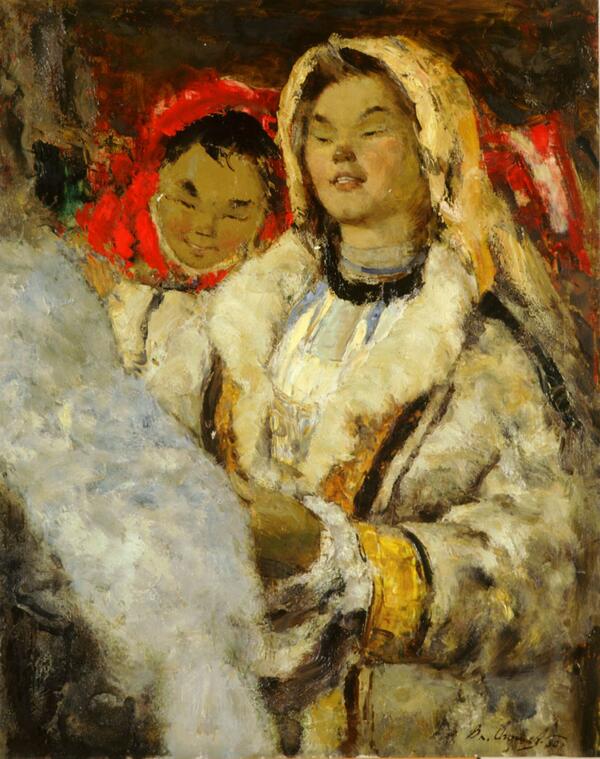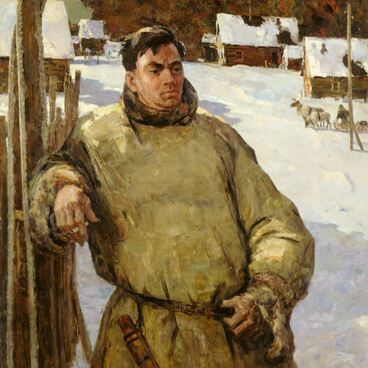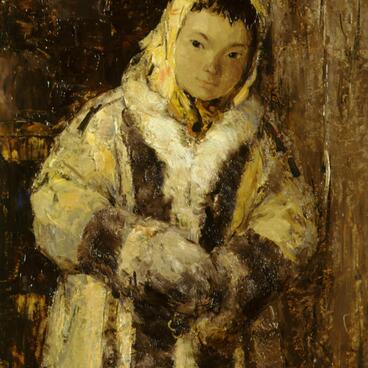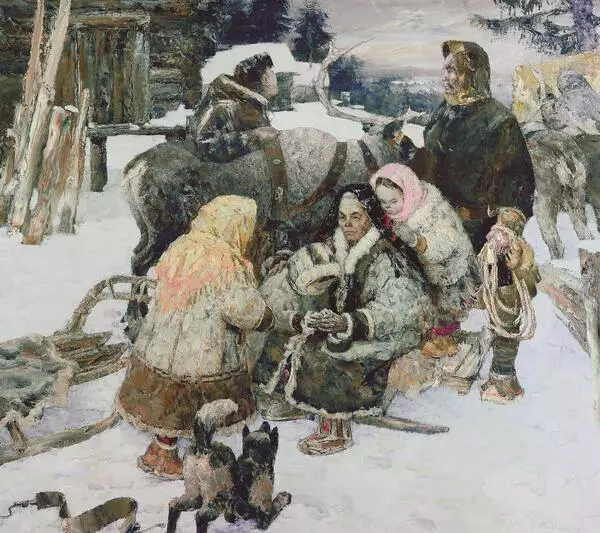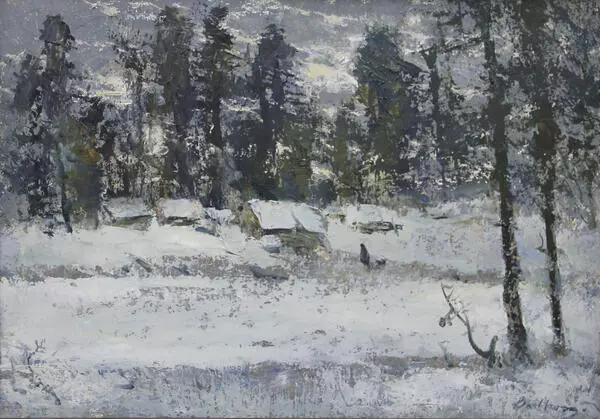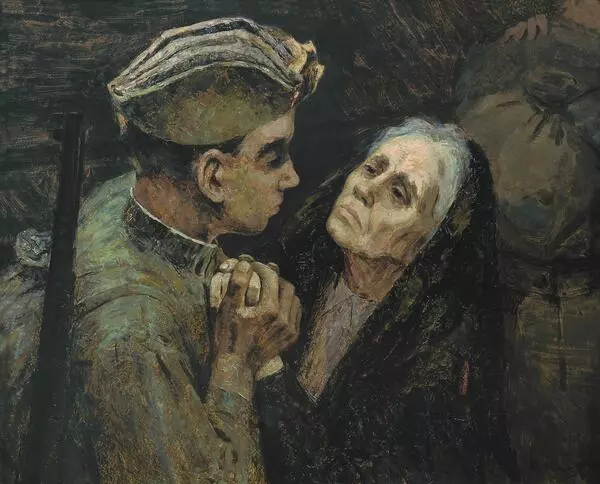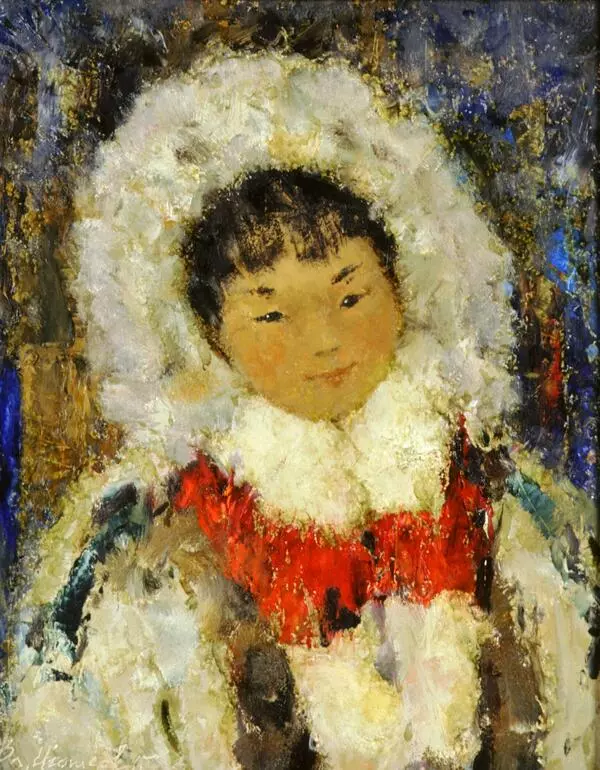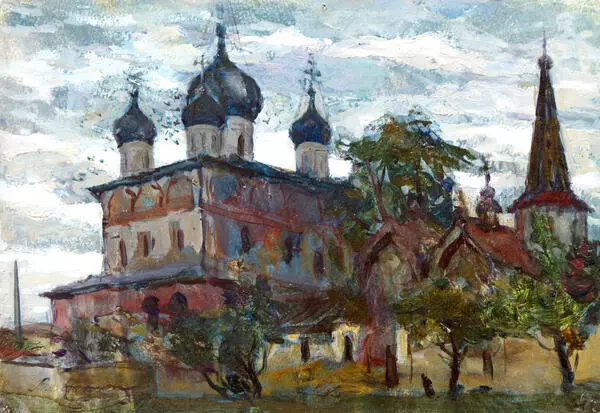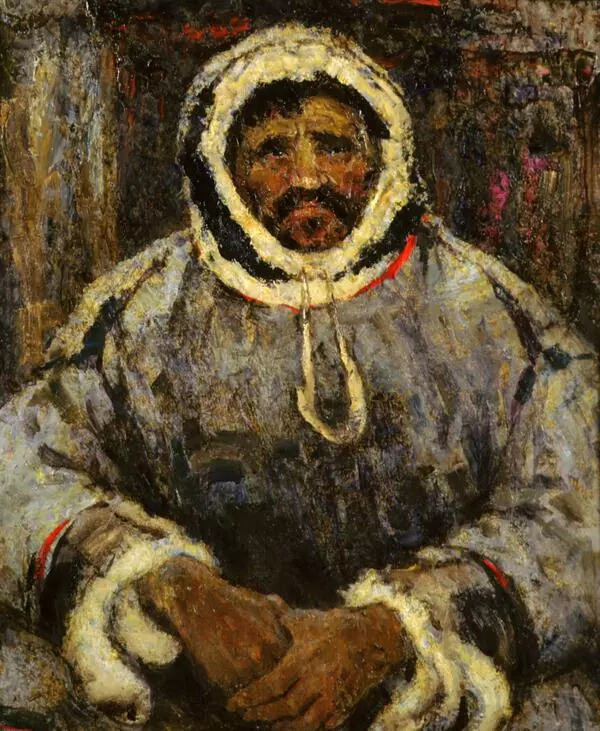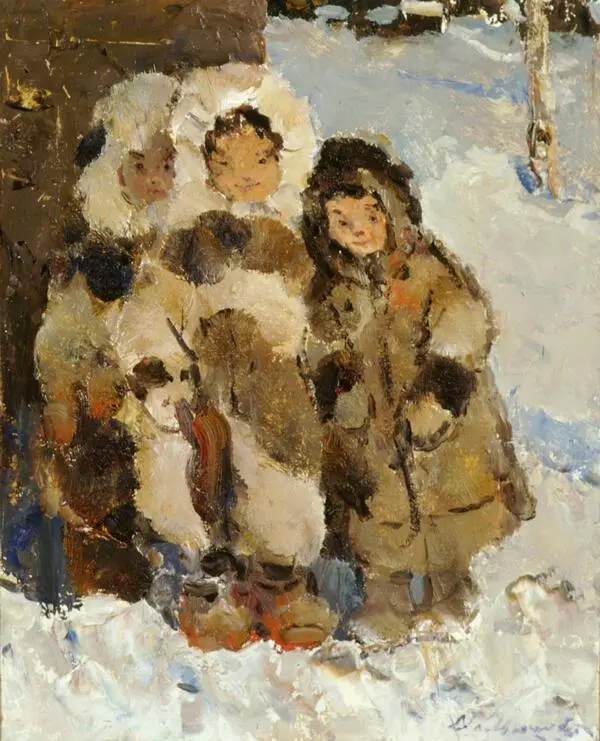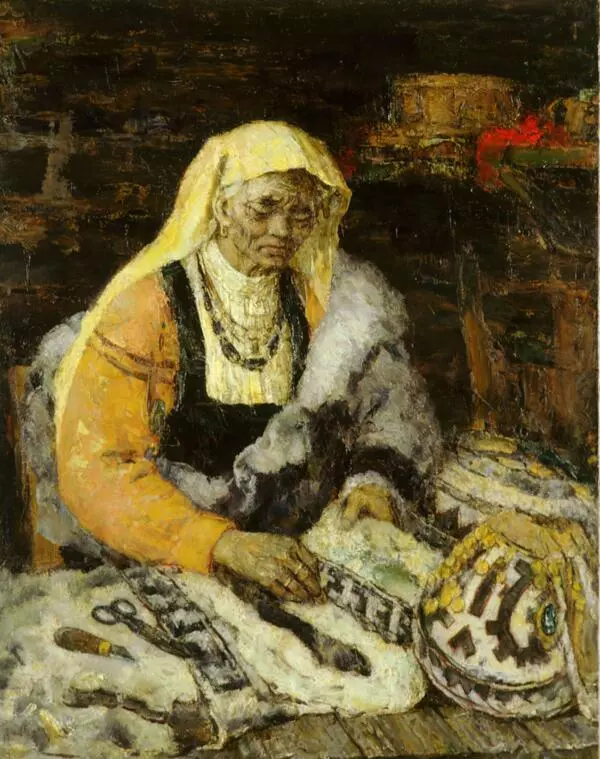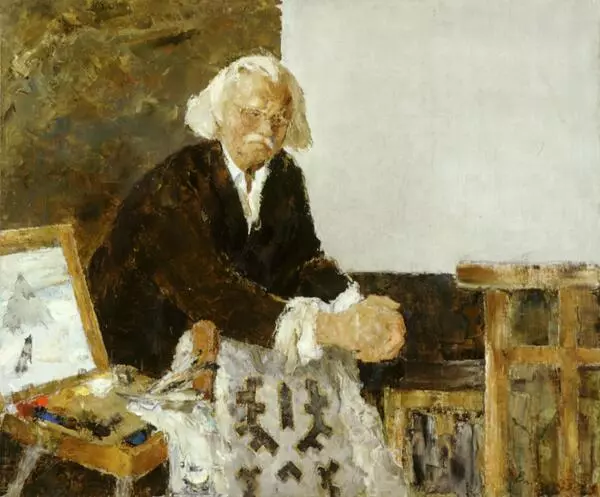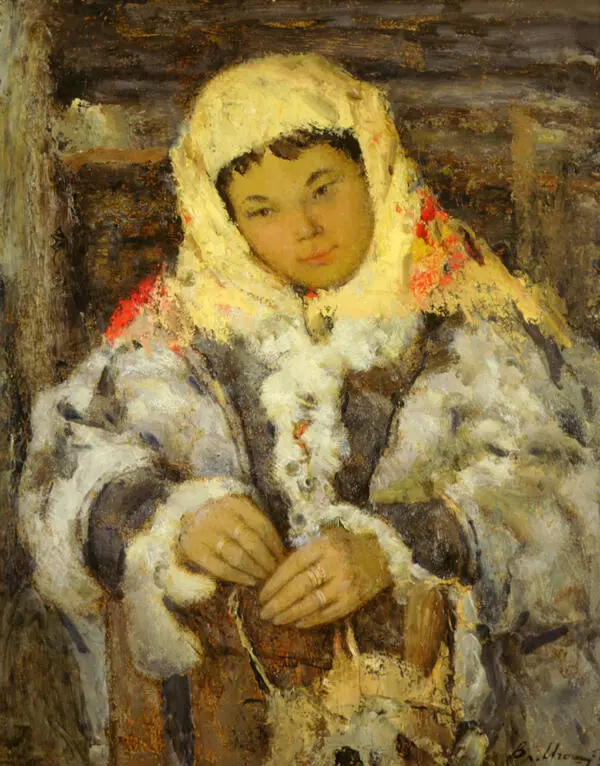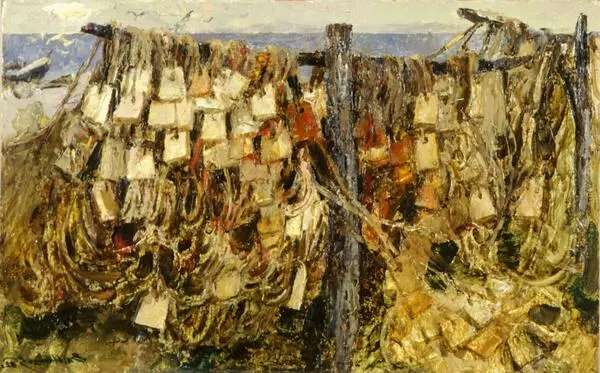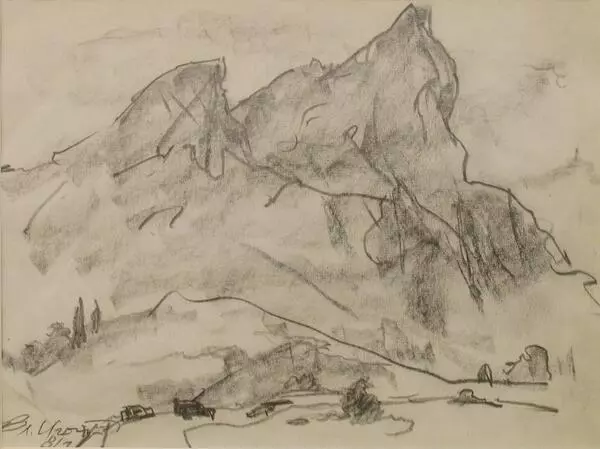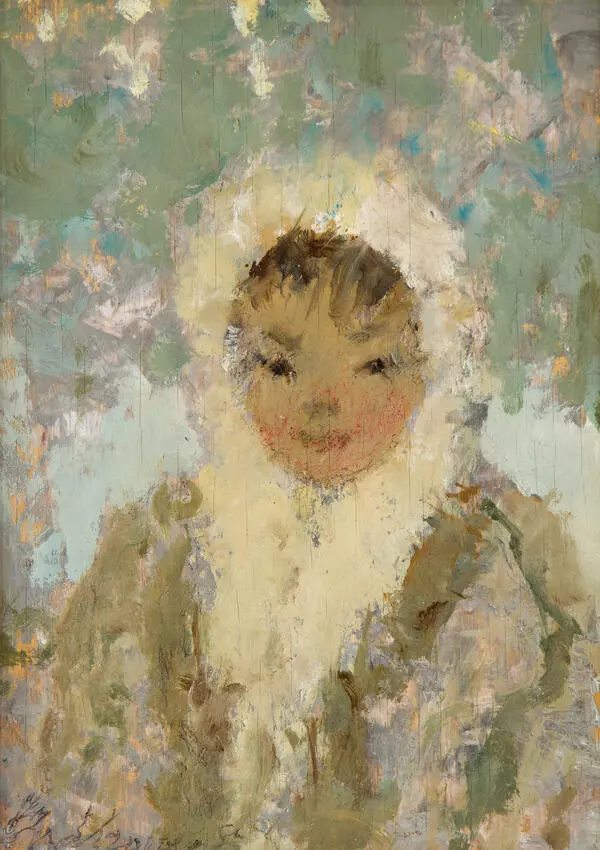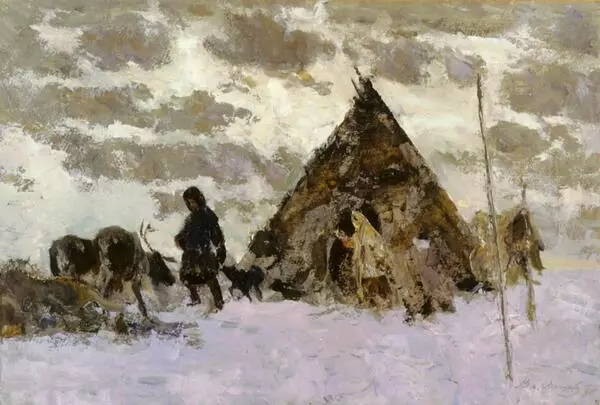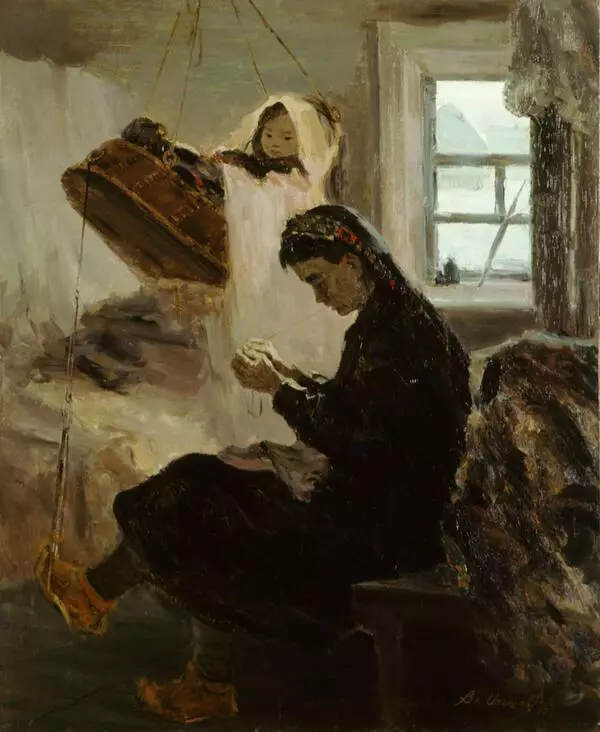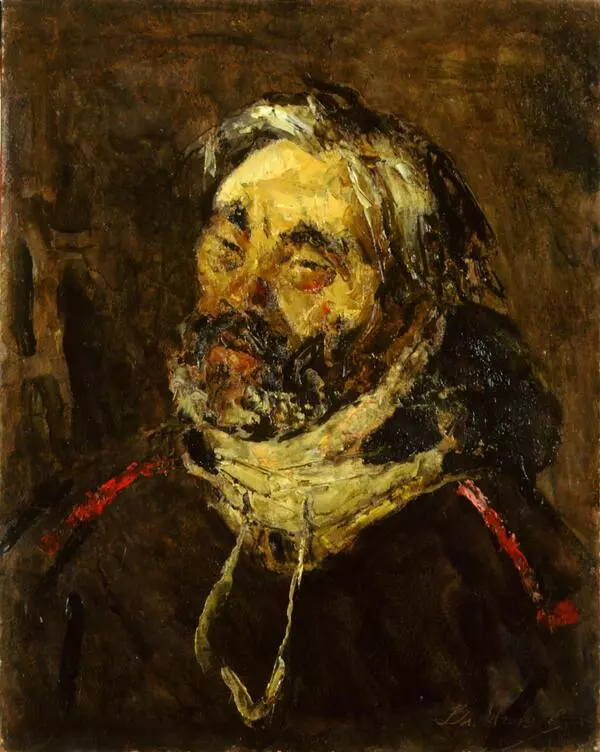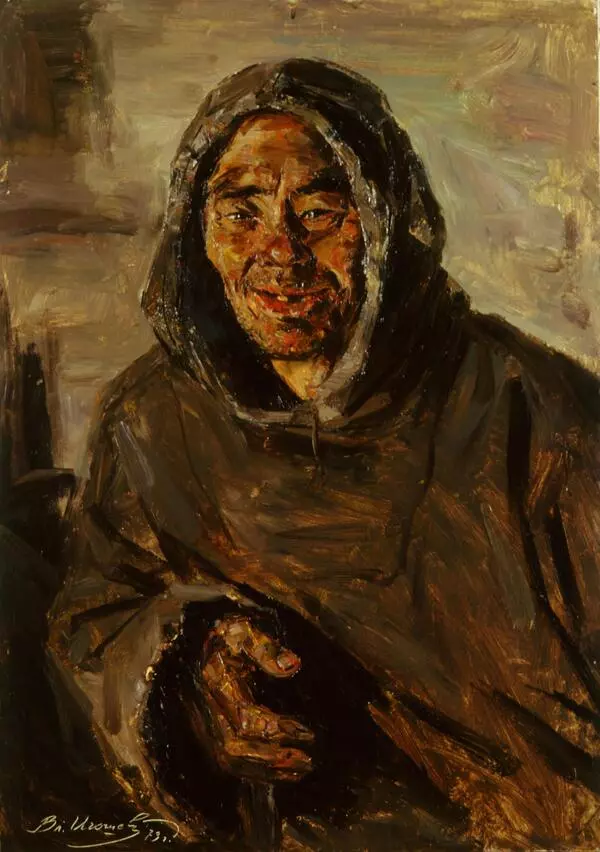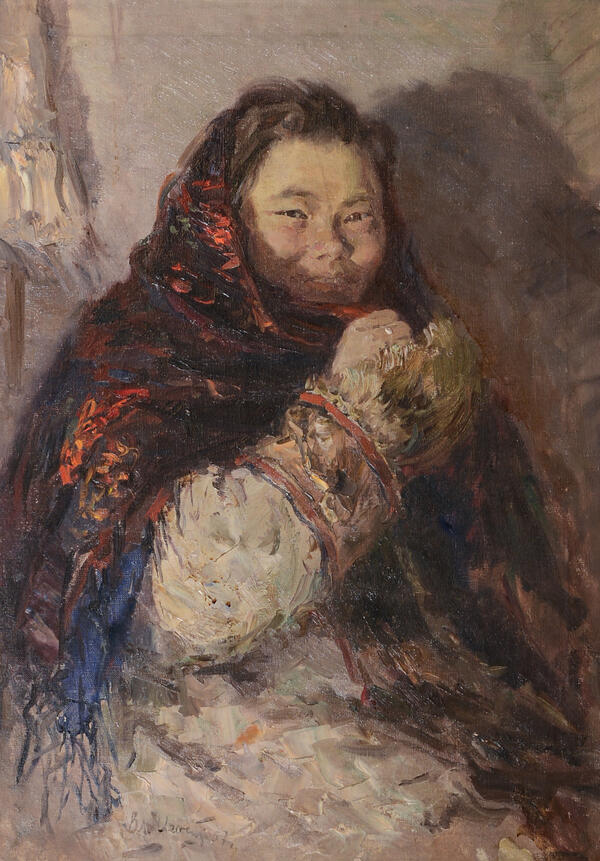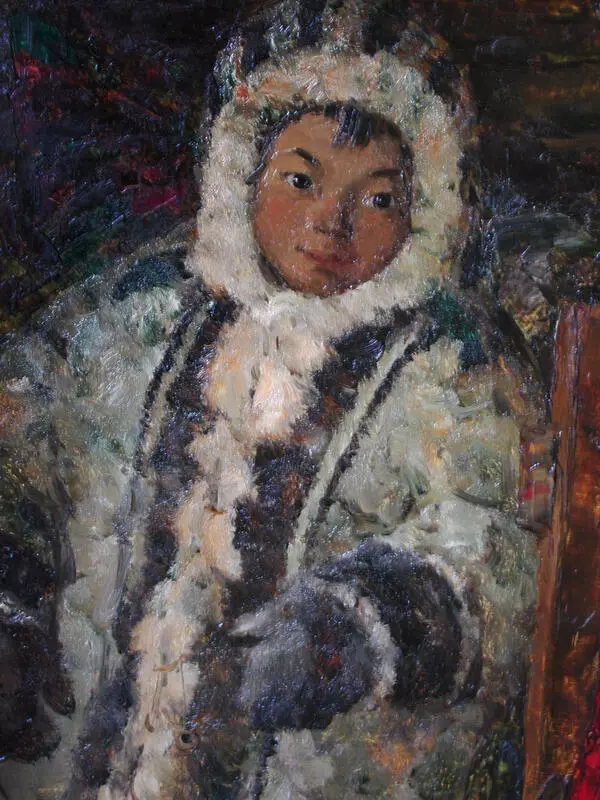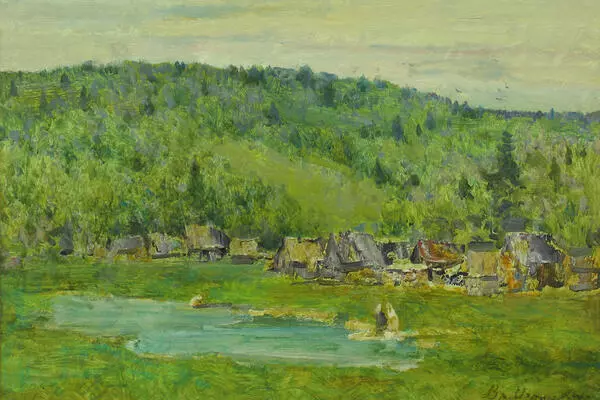The People’s Artist of the USSR Vladimir Igoshev was born in 1921 in a Bashkir village Igoshevsky situated close to Askino in the north of the republic. The future artist studied in Ufa at the Arts Faculty of the Ufa College of Arts. In 1950 Vladimir Igoshev graduated from The Surikov Art Institute in Moscow, where he was a student of a full member of the USSR Academy of Arts Georgy Ryazhsky. Vladimir Igoshev worked in various genres: he painted portraits and self-portraits, worked on landscapes and genre paintings. In 1982 the artist won the State Prize of Russia named after I. E. Repin.
In his painting Fiance’s Gift Igoshev depicted two young representatives of the peoples of the North. One of them is examining the wedding gift given by her matchmakers.
Matchmaking was a part of the wedding rite among Khanty and Mansi people. The gloomy day, when the whole bride’s family stayed in, was usually chosen for the event. The honorary role of matchmakers was usually given to the fiance’s close relatives (his parents or an uncle) or some invited people. There were the cases when a groom himself was an immediate participant of matchmaking. The matchmaking ceremony started with a small talk with the bride’s parents. They talked about the weather, reindeer, holidays and celebrations. The guests were sitting at the table; the food was cooked by the bride’s parents. Everyone realized the importance of the conversation, but nobody spoke of the matchmaking before its due time. The main subject of the meeting was discussed when the guests finished their meals. If the bride’s parents gave their consent to marriage, they started to discuss the bride money and the date of the wedding. At the end of the negotiation the groom and matchmakers gave presents to the bride and her parents. It was the moment depicted in the painting.
In his painting Fiance’s Gift Igoshev depicted two young representatives of the peoples of the North. One of them is examining the wedding gift given by her matchmakers.
Matchmaking was a part of the wedding rite among Khanty and Mansi people. The gloomy day, when the whole bride’s family stayed in, was usually chosen for the event. The honorary role of matchmakers was usually given to the fiance’s close relatives (his parents or an uncle) or some invited people. There were the cases when a groom himself was an immediate participant of matchmaking. The matchmaking ceremony started with a small talk with the bride’s parents. They talked about the weather, reindeer, holidays and celebrations. The guests were sitting at the table; the food was cooked by the bride’s parents. Everyone realized the importance of the conversation, but nobody spoke of the matchmaking before its due time. The main subject of the meeting was discussed when the guests finished their meals. If the bride’s parents gave their consent to marriage, they started to discuss the bride money and the date of the wedding. At the end of the negotiation the groom and matchmakers gave presents to the bride and her parents. It was the moment depicted in the painting.

